I bought all the walls and sides to the brood chamber and the top feeder. But I needed to put it all together. I recorded it on video and when edited I'll post it. But also took some pictures as I was doing it. Here's a few when I built the second one.
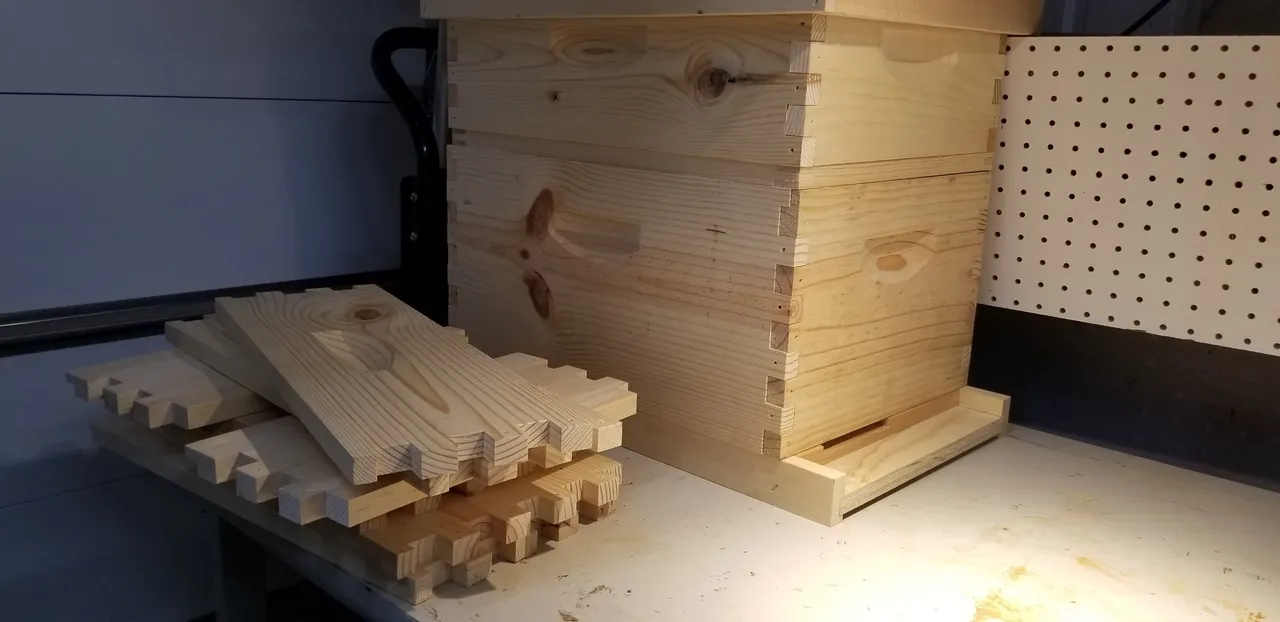
The completed unit is behind and the boards laying on the table is the second one. I put it together and took some pictures as I did.
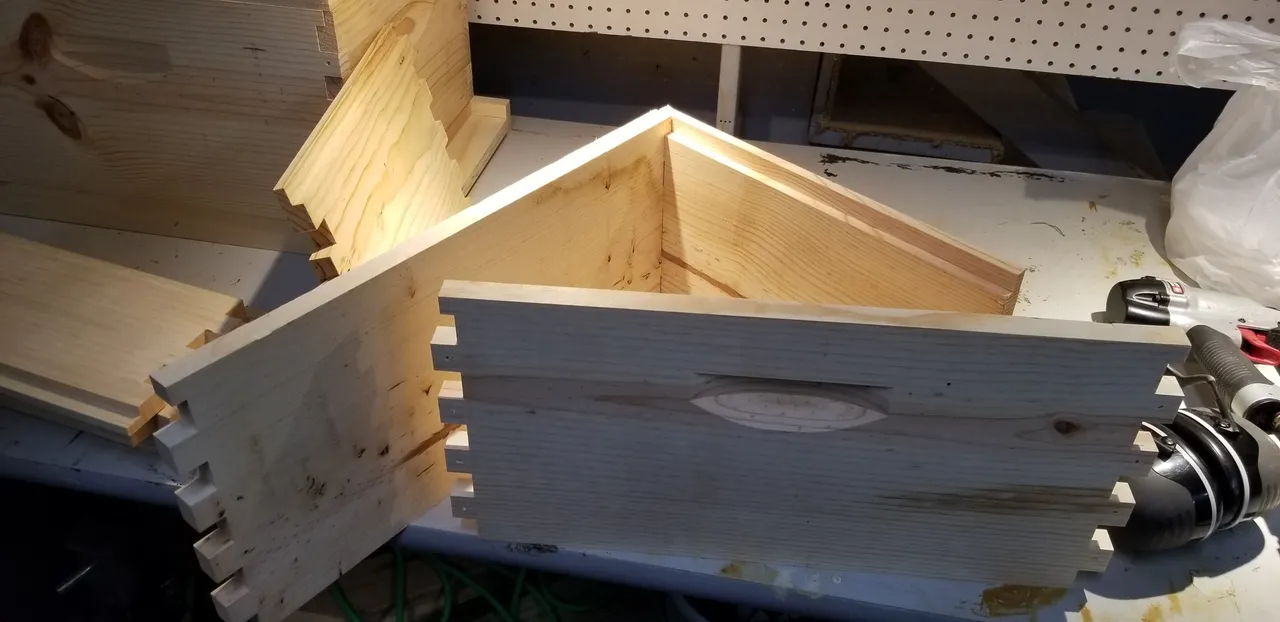
Assembly was made easy by the way these were constructed. All I had to do was jig them up and then nail them together.
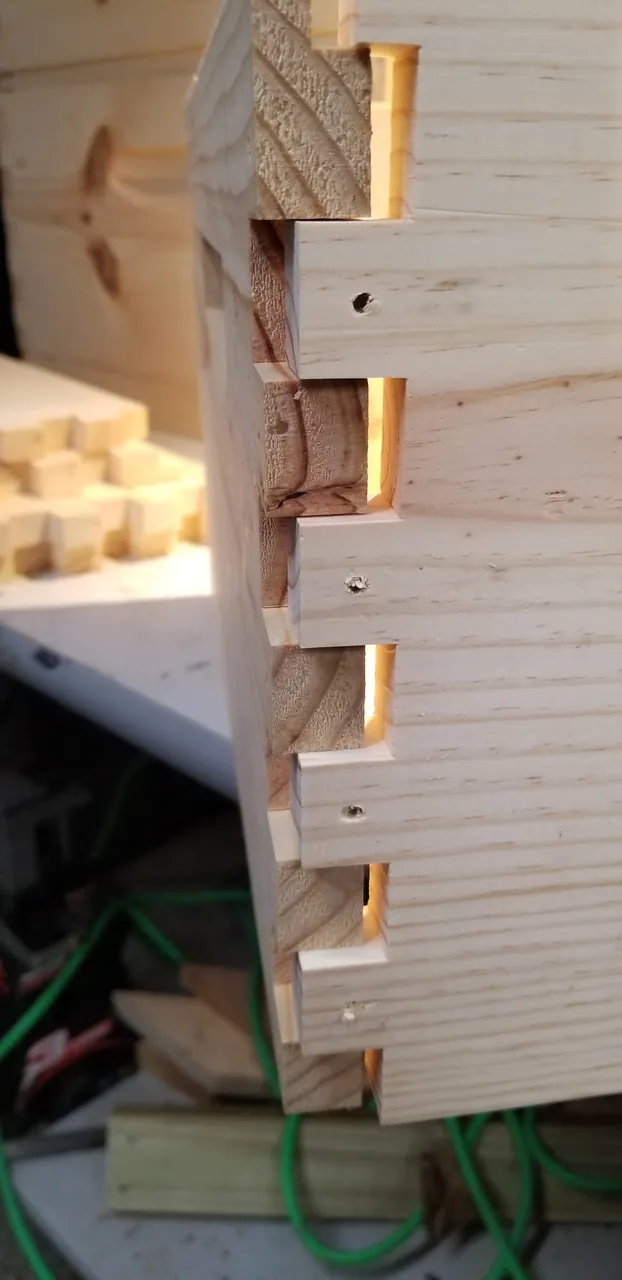
The pieces had fingers that fit together completing the box. The gap is close when nailed. Also the paint will help seal any openings left.

They fit loosely until I used my brad nailer gun, a small nailer to attach them permanently. I used a two inch brad, as big as the gun will shoot. And turned my compressor up to 100 PSI to sink them in deep.
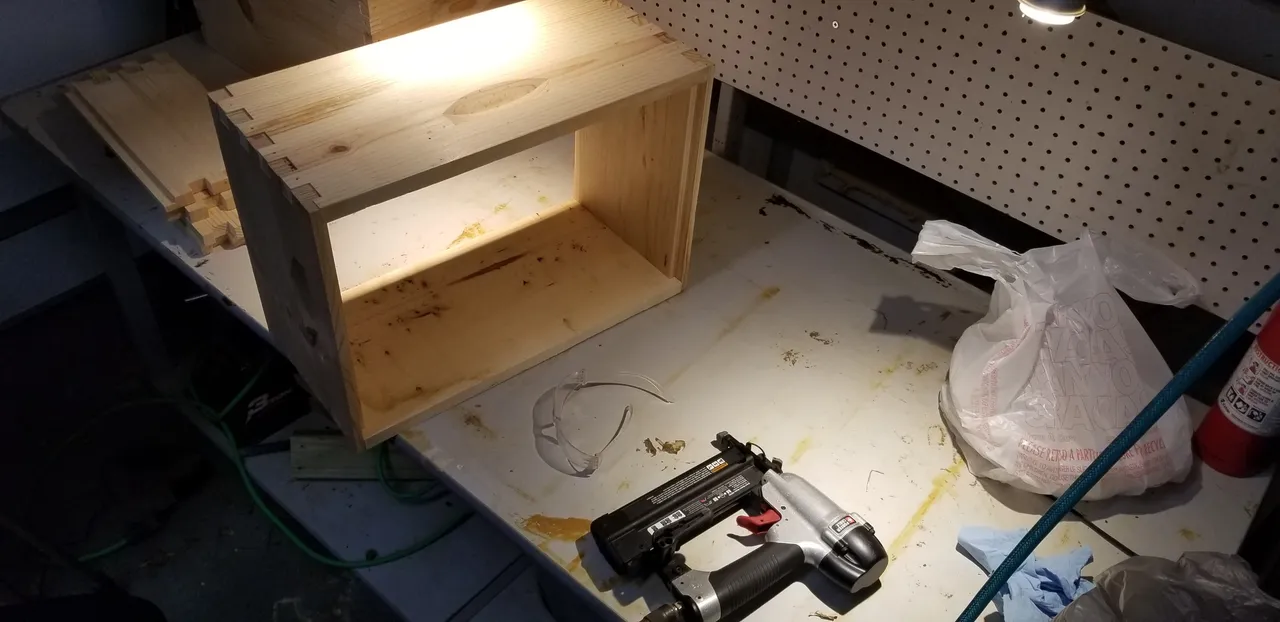
Each side got four of these nails and I turned the box to get all of the spots secured. There were predrilled holes that made it easy to drive them in. Hoping the little heads of the brads are enough.

Once all nailed I put in a tray to make sure they fit well. Then proceeded to put the rest in to make sure it all works well.

I need to check with my bee supplier if the way I did the trays are right. I think it goes one starter, one foundation.. then repeat. Also seems I may be missing two trays as I had more for the first beehive I built.
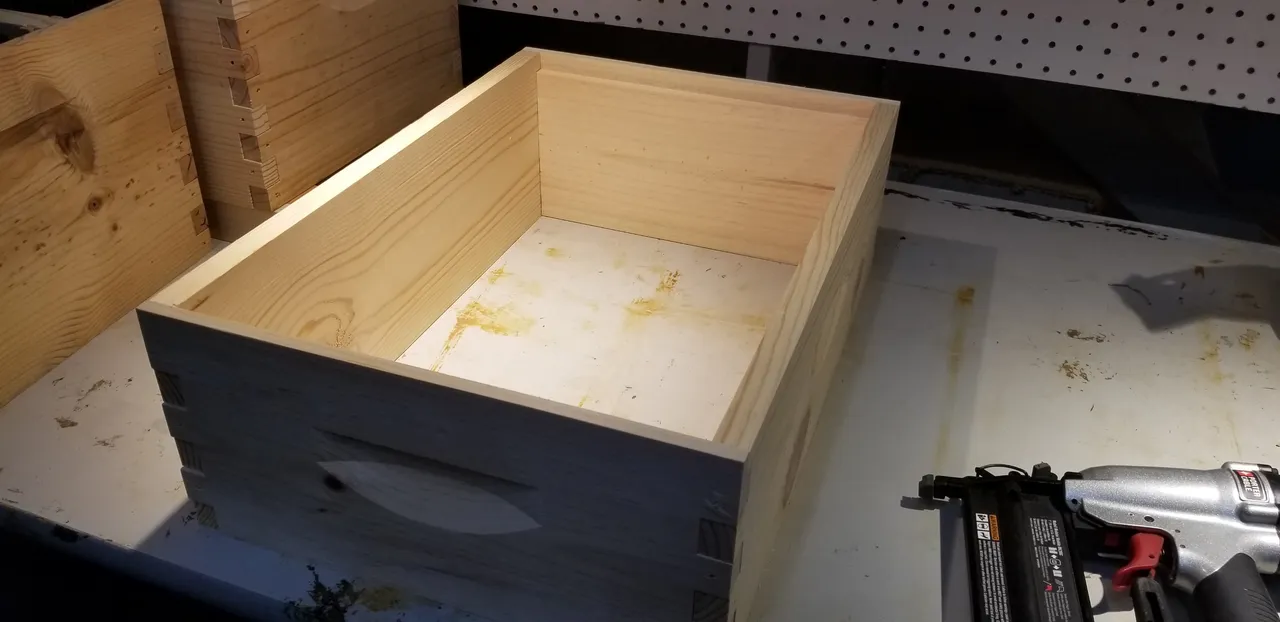
The second box goes on top, it's a little smaller and it holds sugar water. The Bees can feed from it without leaving the brooding chamber (the big box).
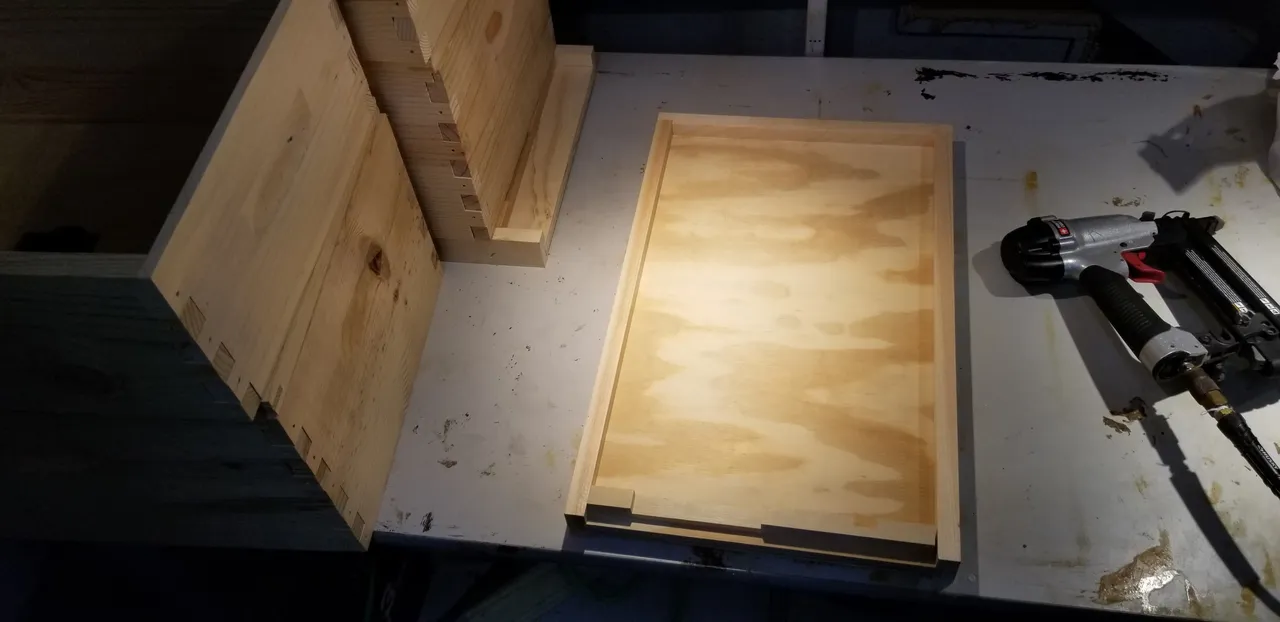
After assembling the second smaller box for the sugar water. I put it all together to make sure it fits. Everything still needs to be painted but good to make sure it fits.
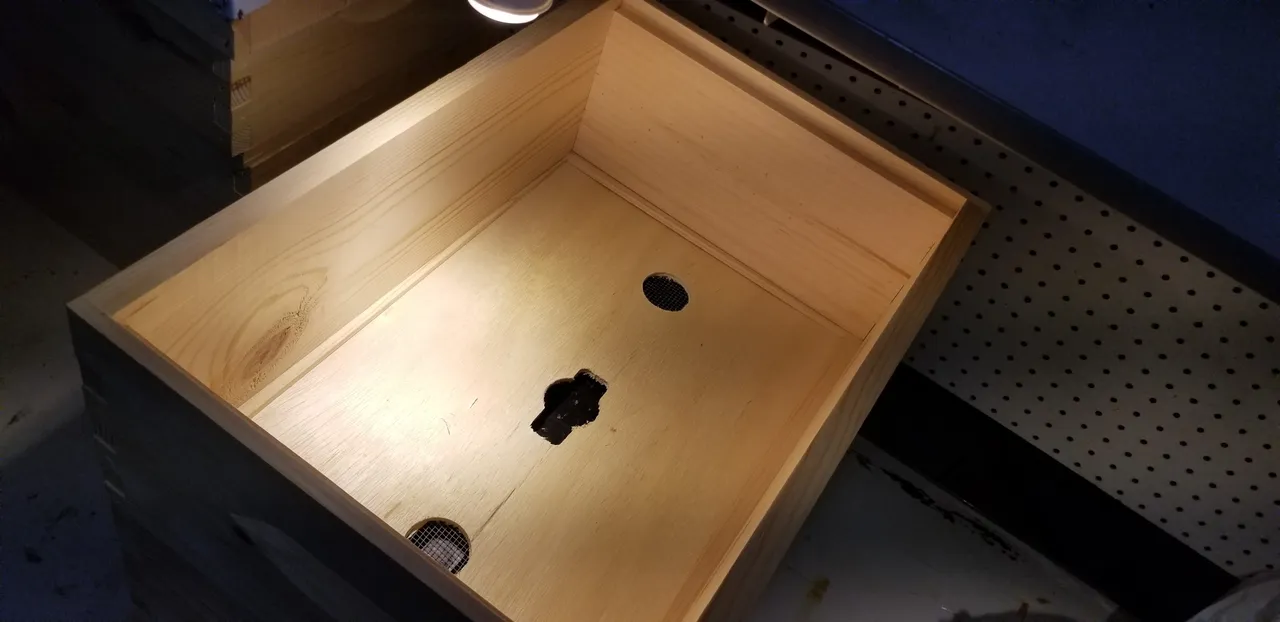
With the brooding chamber on the bottom, I then place the board that separates the sugar water chamber from the brooding chamber. I place the dish that holds the sugar water in next.
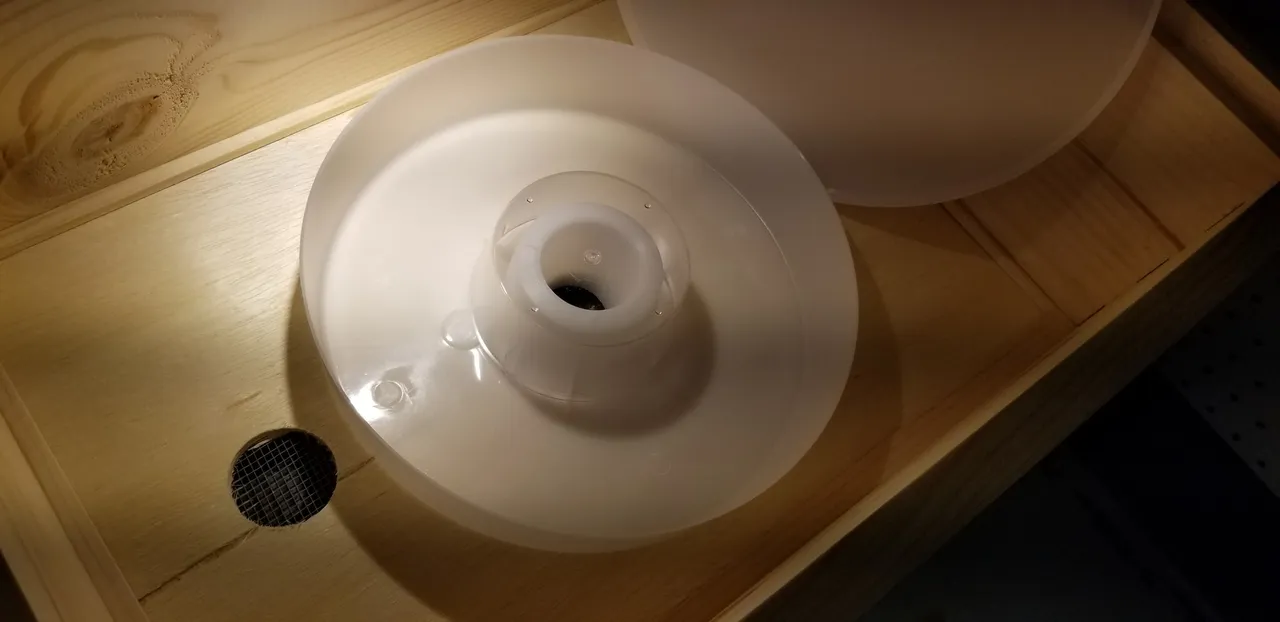
A cover goes on keeping it enclosed so Bees do not get trapped inside. Filling this along with some larger buckets is the most important thing to do on the regular basis from what i can tell. They will drink it all in a few days. So checking on their water regularly is important.
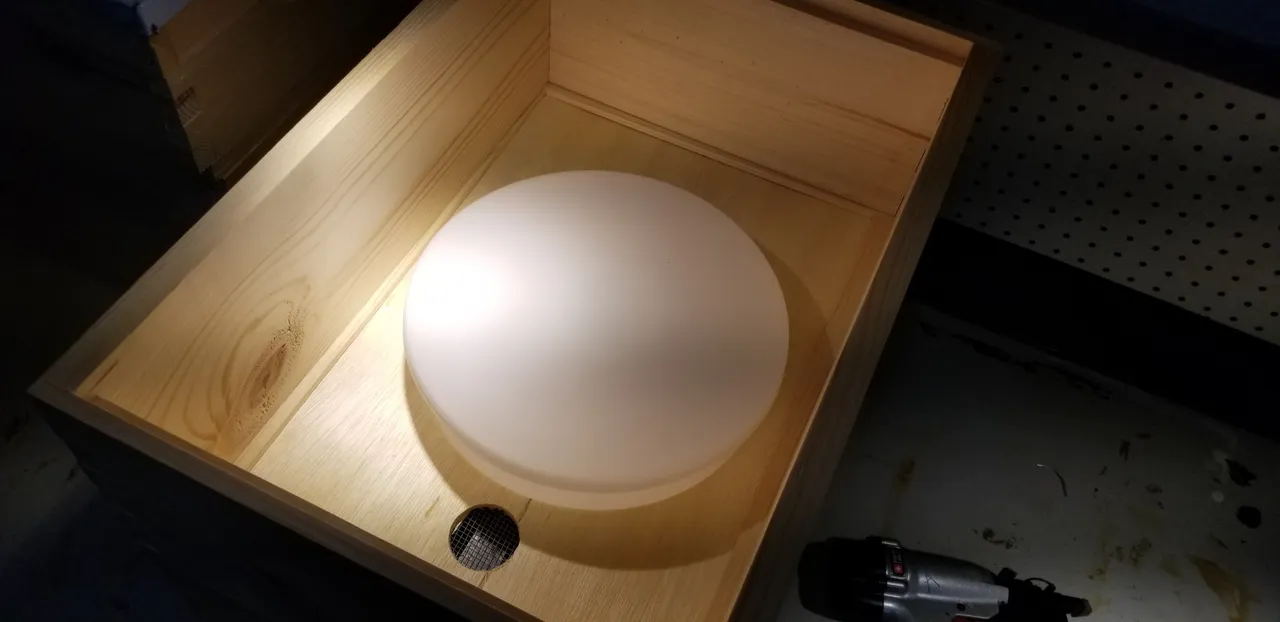
Using extra water containers away from the hives will give them an extra source. They also have a creek near by they can visit.
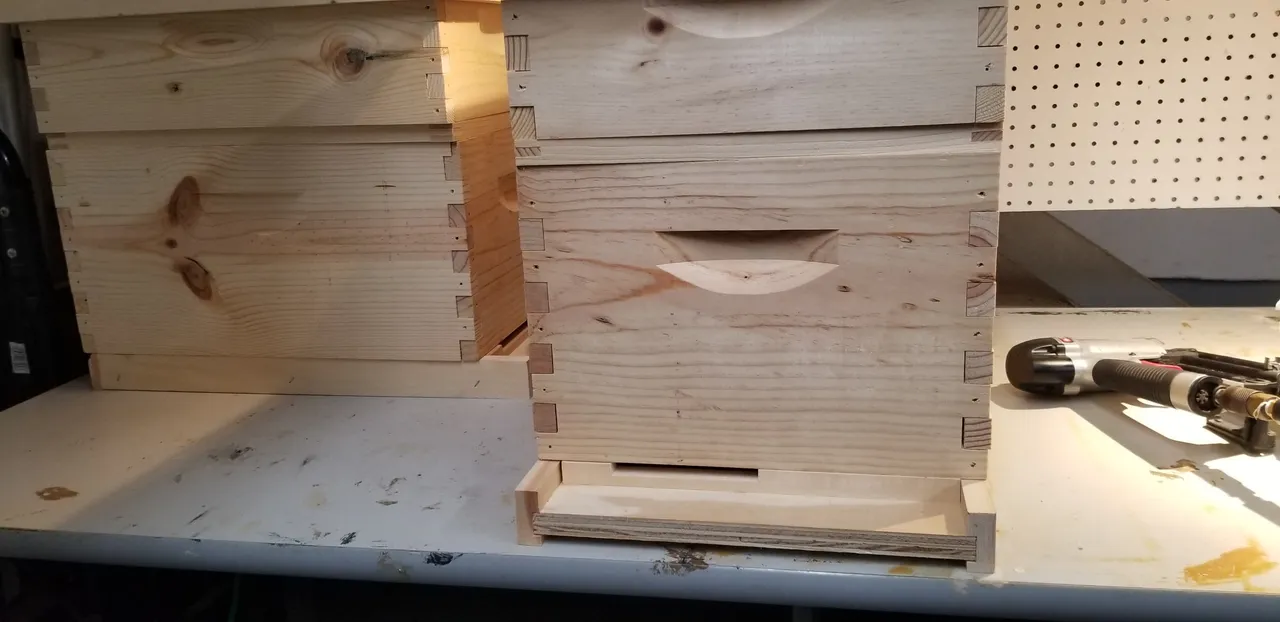
They are built, now I need to take the trays out and paint the outside of the individual sections. I think I'm going to use two different colors for each hive. I hear it helps bees remember which hive is theirs. Since they cannot see red or orange I may use something besides those. But I can still spray paint a Hive logo on the sides at the end.

I also have alot of prep work to do at the site where these hives will be placed. Planning on doing that during the winter when working outside is more preferable.